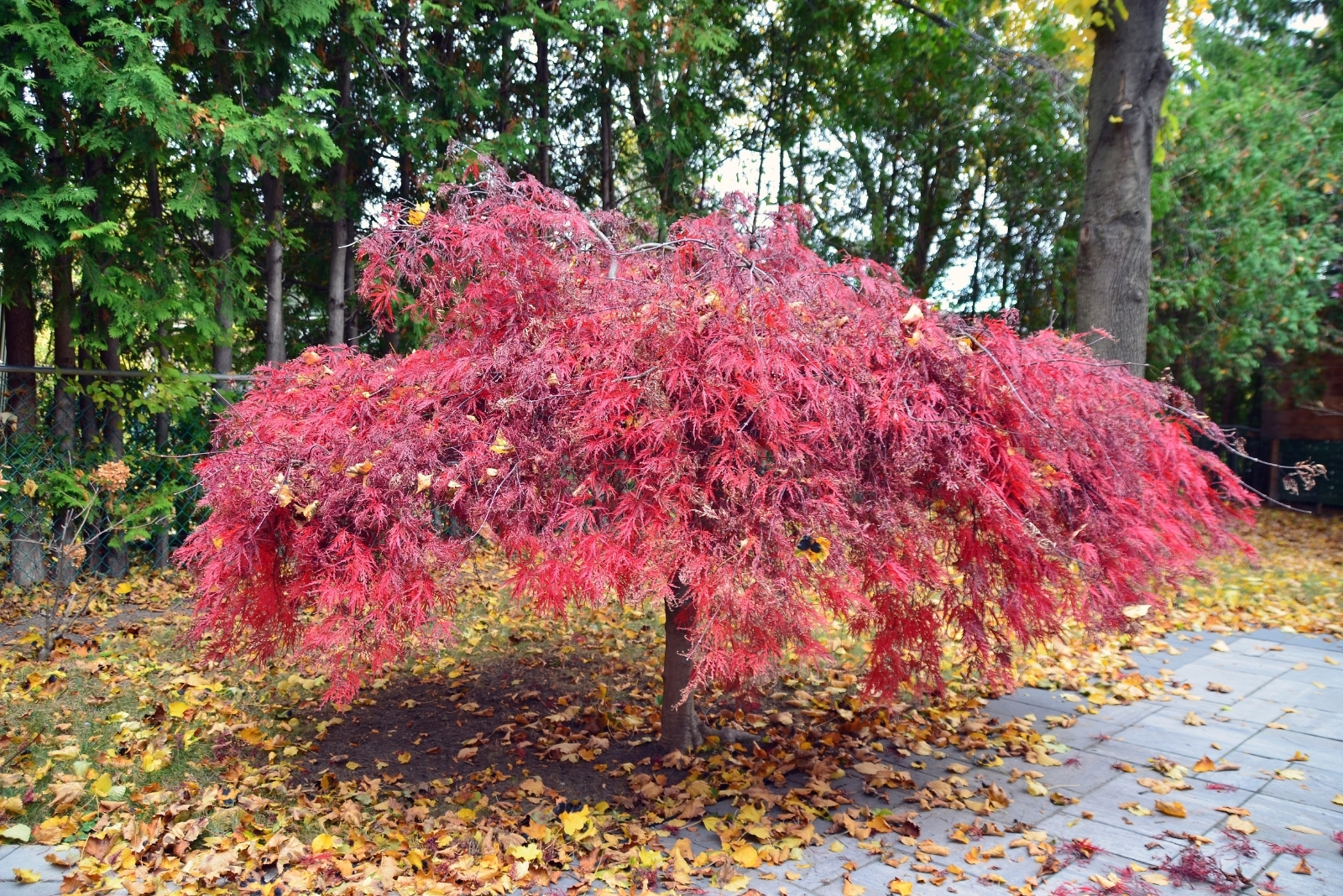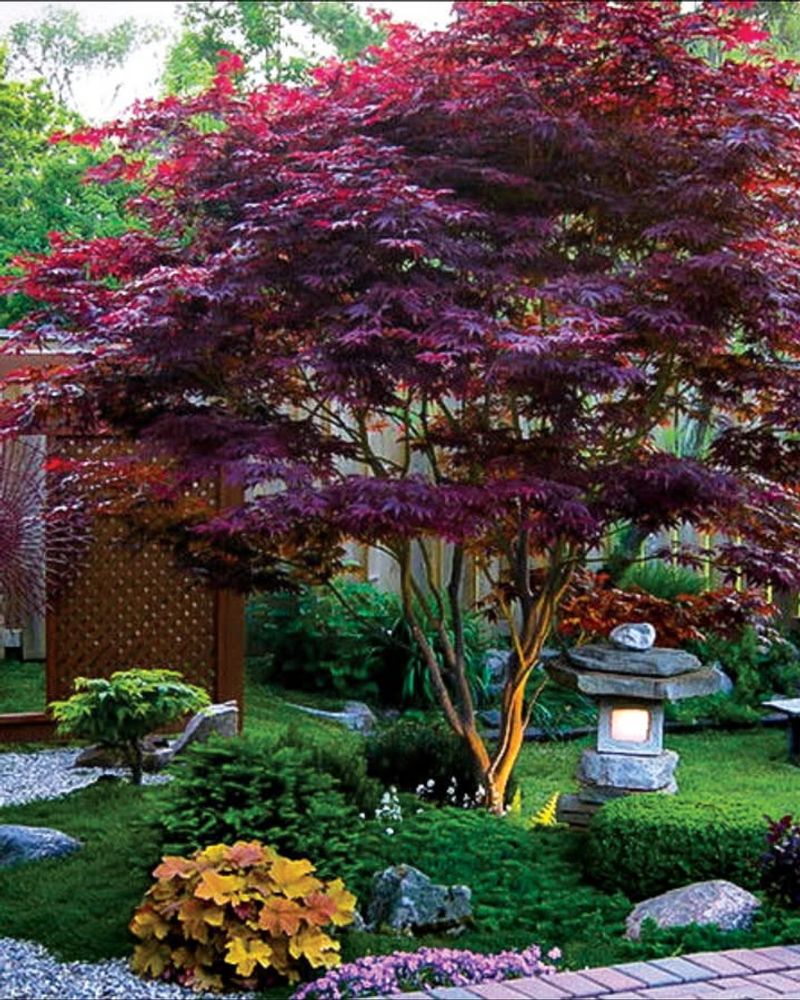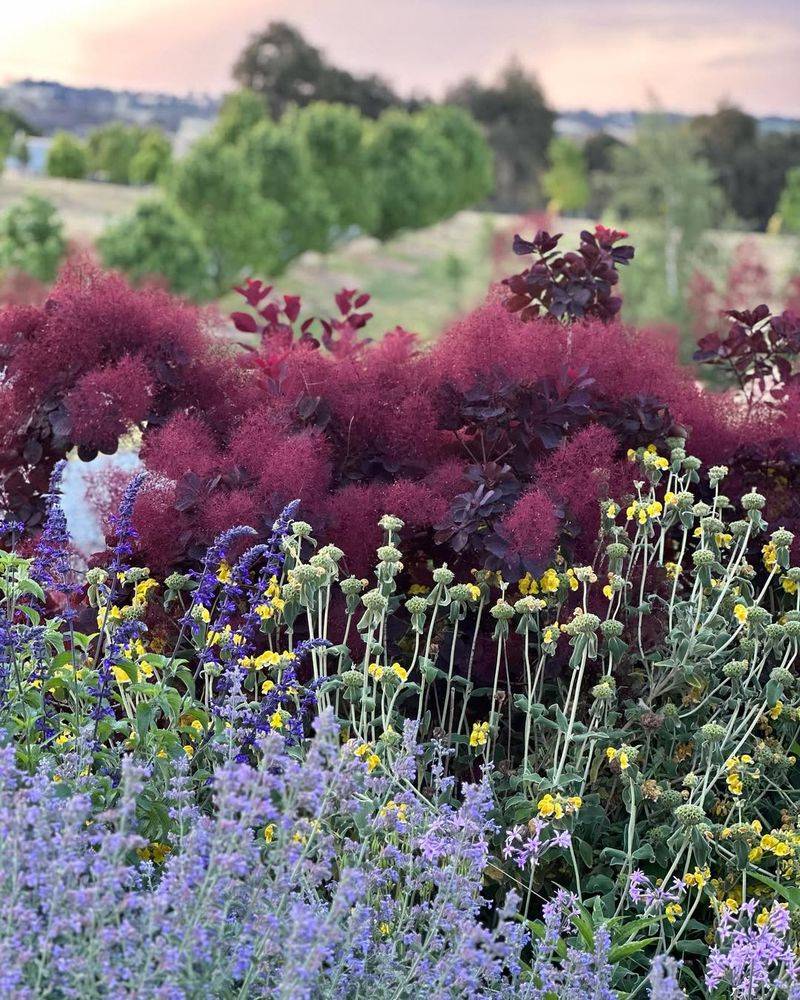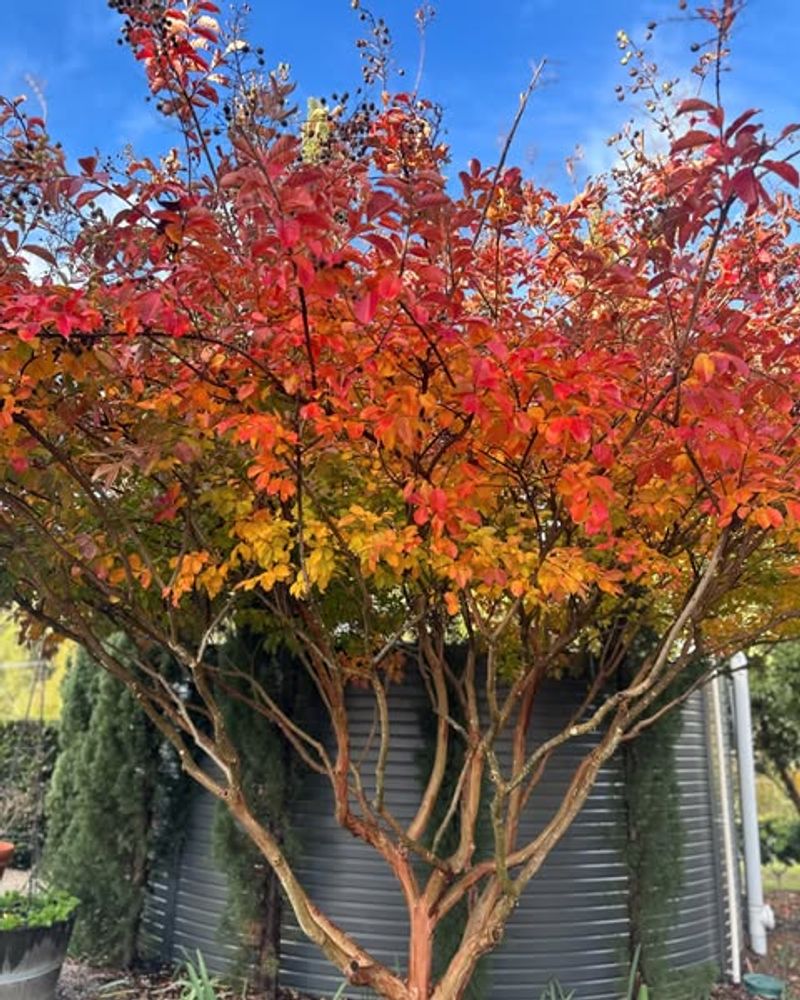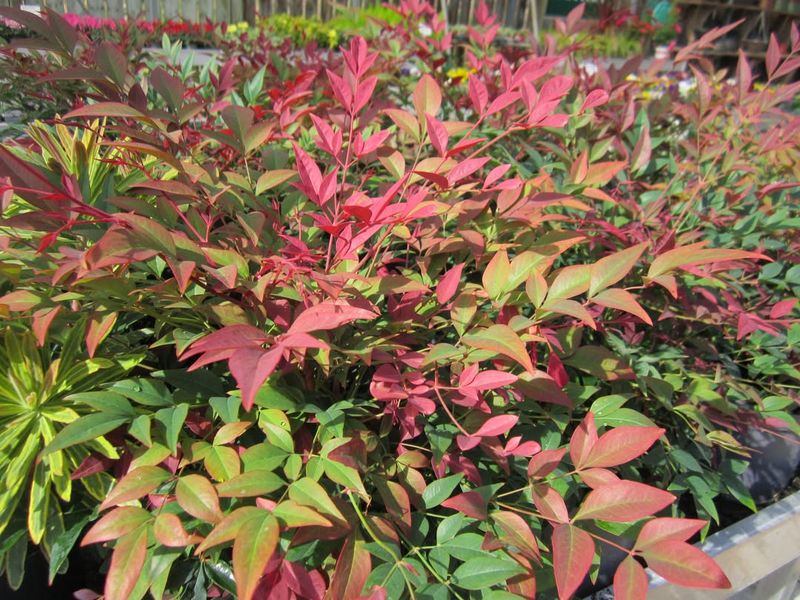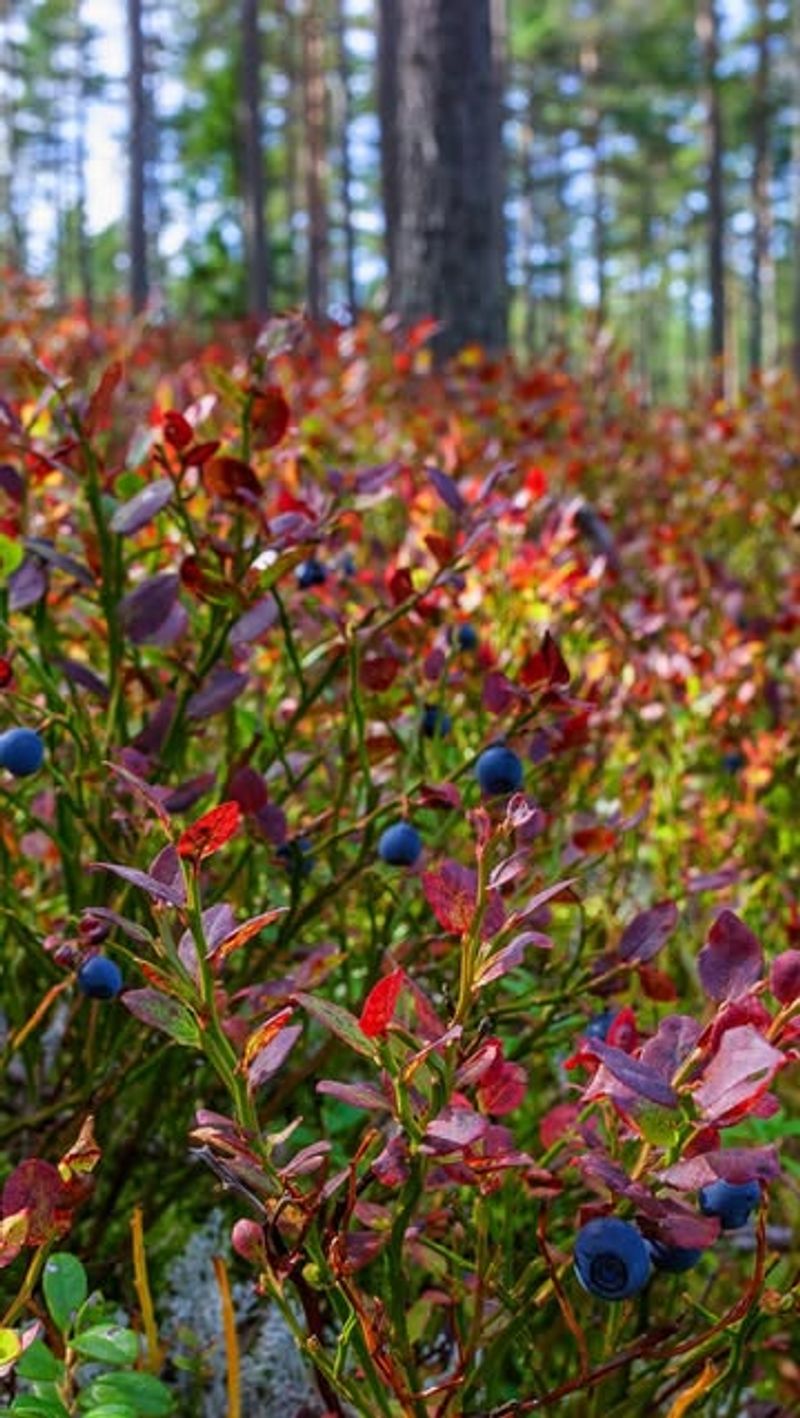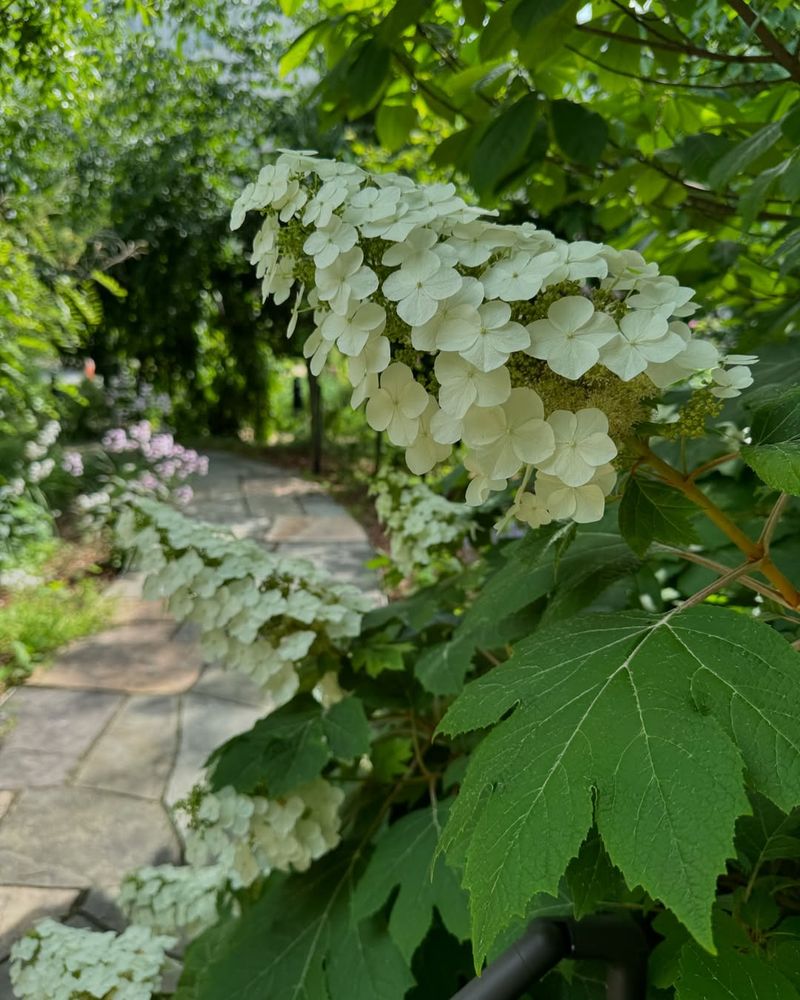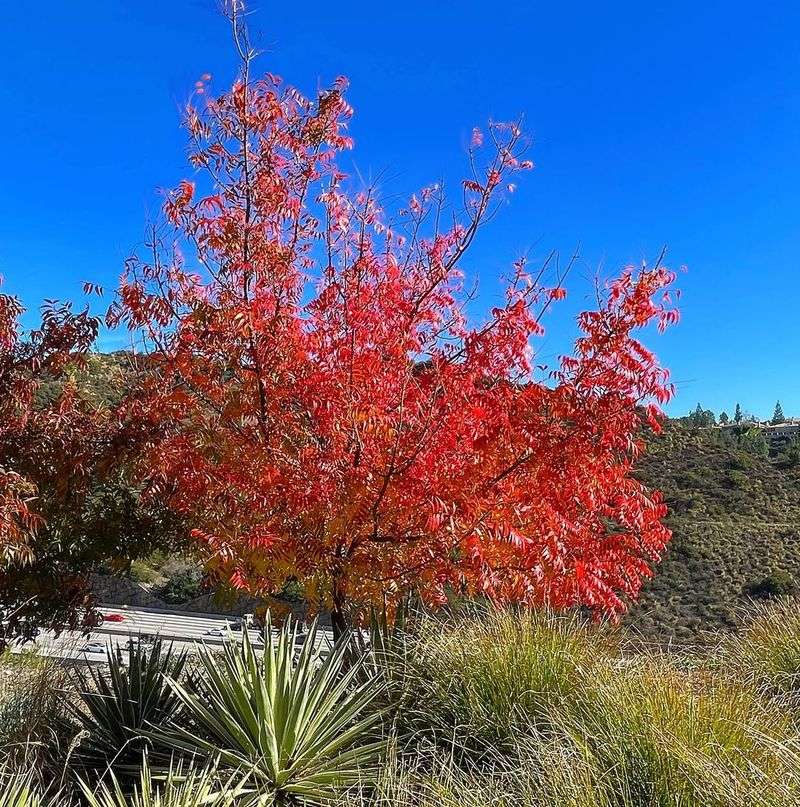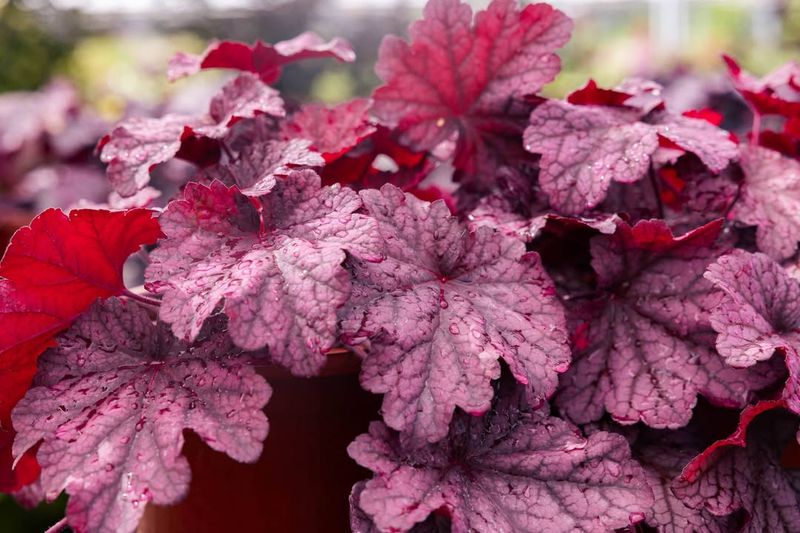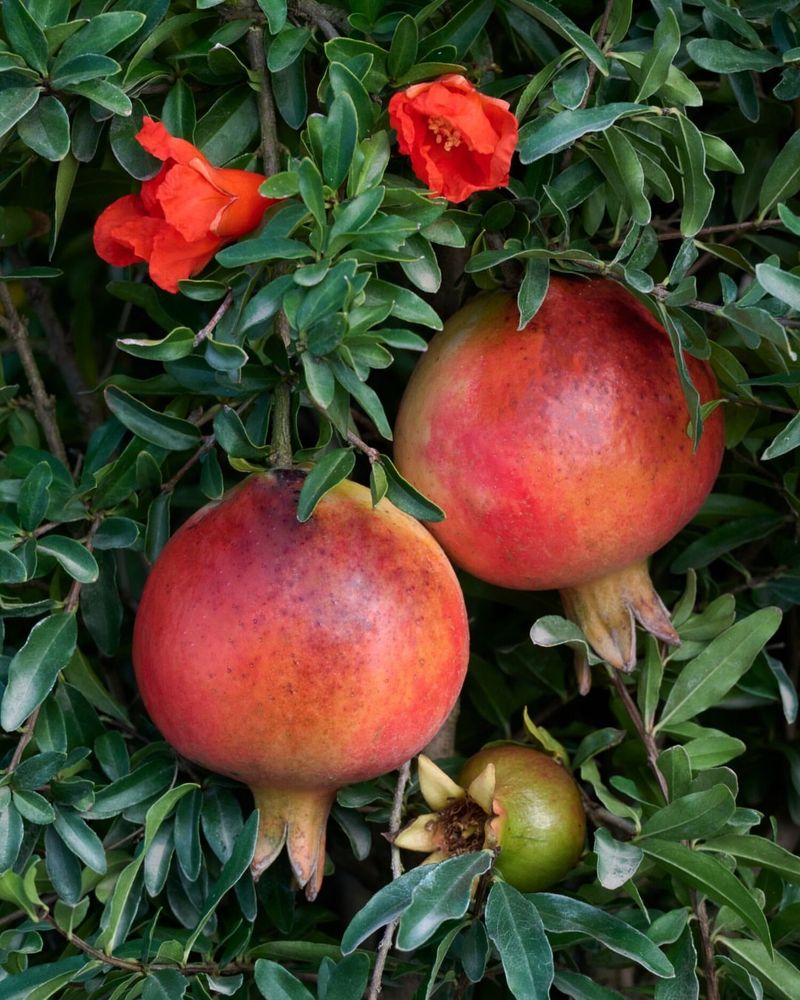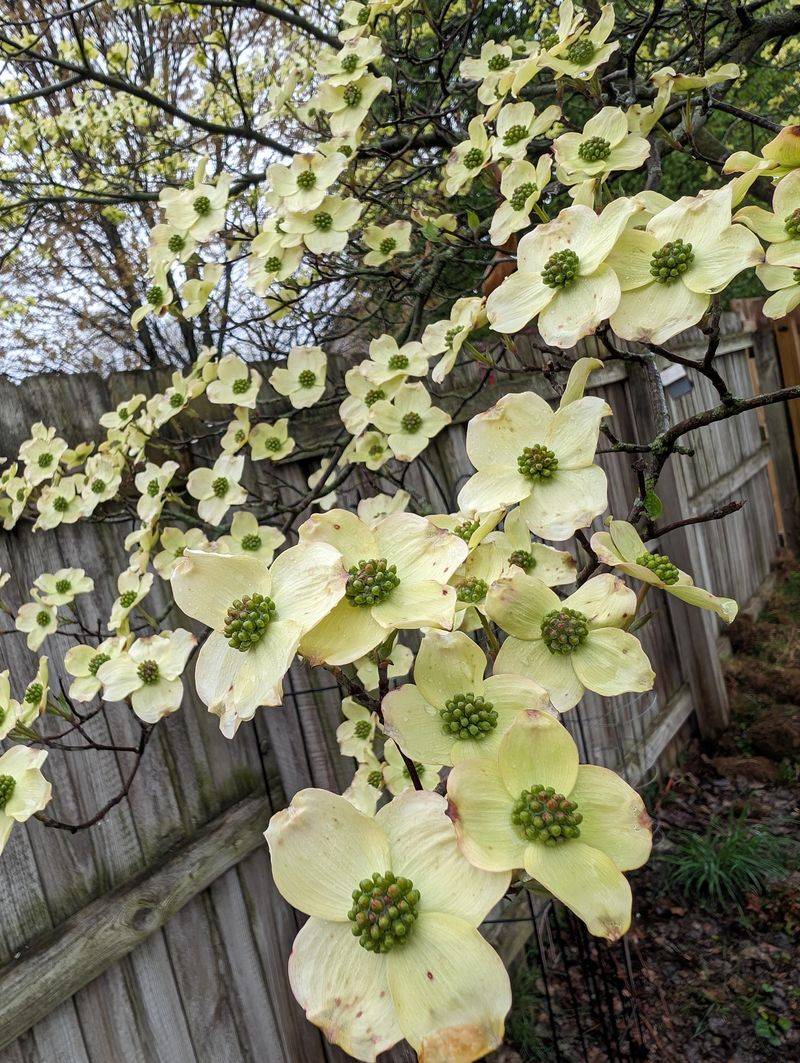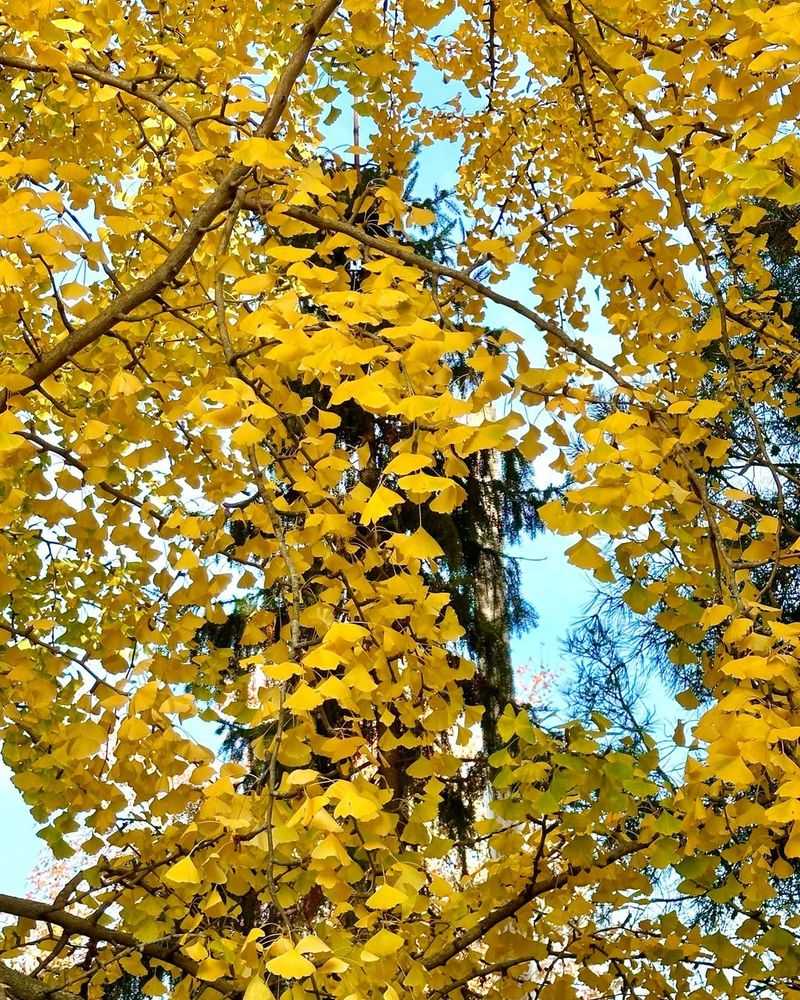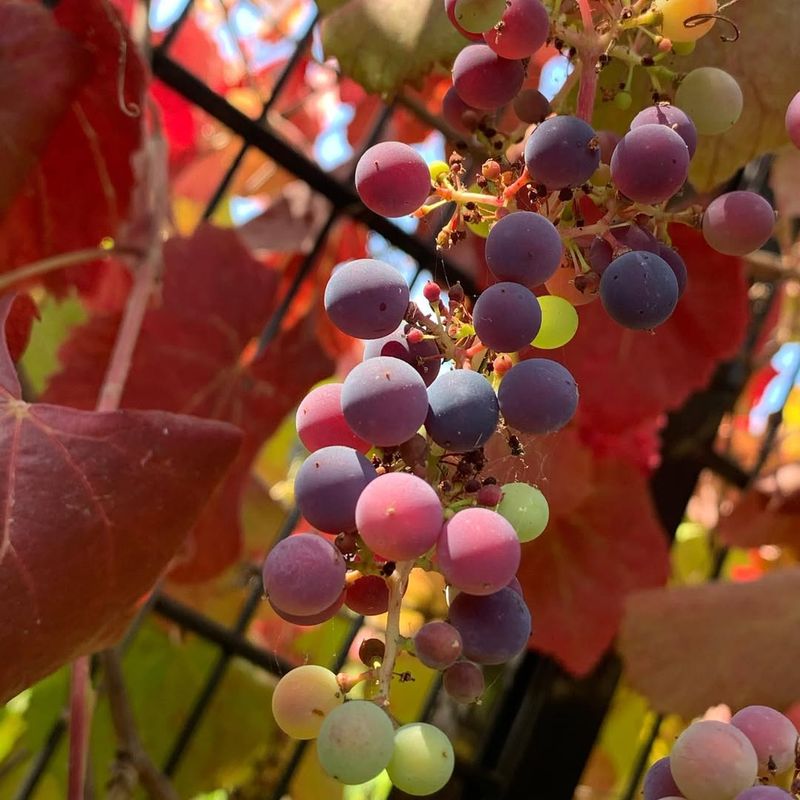California gardens are all about dynamic beauty, and plants that change color fit right in. From subtle shifts to bold transformations, these plants keep your landscape exciting all season.
They add interest without demanding constant care. Each change in hue feels like a little surprise in your yard.
1. Japanese Maple
Few trees rival the stunning transformation of Japanese Maple throughout the year. Starting with bright green or burgundy spring leaves, this ornamental favorite deepens into rich summer tones before exploding into fiery reds, oranges, and yellows come autumn.
California gardeners love how well it tolerates partial shade and cooler coastal areas. Plant it where morning sun and afternoon shade create ideal growing conditions.
With dozens of cultivars available, you’ll find sizes ranging from compact shrubs to graceful small trees perfect for any garden space.
2. Smoke Bush
Imagine purple leaves that seem to glow in summer sunlight, then watch them shift to brilliant orange and scarlet when fall arrives. Smoke Bush earns its name from the wispy, smoke-like flower clusters that appear in late spring, creating an ethereal garden display.
This drought-tolerant shrub thrives in California’s dry summers once established. It handles heat remarkably well, making it ideal for inland valleys and warmer regions.
Prune it hard in late winter to encourage vibrant new growth and maximize that incredible leaf color throughout the growing season.
3. Crape Myrtle
Summer blooms in pink, purple, red, or white give way to an autumn surprise when Crape Myrtle leaves turn shades of orange, red, and yellow. This Southern favorite has found a welcoming home throughout California, especially in warmer inland areas.
Gardeners appreciate its long flowering season and low water needs once roots establish themselves. The smooth, peeling bark adds winter interest when leaves drop.
Choose from dwarf varieties for containers or full-sized trees that reach 25 feet, all offering that signature color transformation California landscapes crave.
4. Heavenly Bamboo
Don’t let the name fool you—Heavenly Bamboo isn’t bamboo at all, but it does bring heavenly color changes to California gardens year-round. New spring growth emerges bronze or pink, matures to green, then transforms into brilliant reds and purples when temperatures drop.
White flower clusters in spring become red berries by fall, adding another layer of seasonal interest. This evergreen shrub tolerates various conditions, from coastal fog to valley heat.
Plant it in partial shade for best color development and watch it brighten shaded garden corners throughout the year.
5. Blueberry Bushes
Who says edible plants can’t be ornamental? Blueberry bushes deliver delicious fruit in summer, then steal the show in autumn with leaves that turn vibrant shades of red, orange, and burgundy.
California’s climate suits many varieties, especially in regions with acidic soil or where you can amend the ground properly. Coastal gardeners find them particularly happy in the cooler, moister air.
Plant multiple varieties for better pollination and extended harvest, then enjoy the bonus of fall color that rivals any purely decorative shrub in your landscape.
6. Oakleaf Hydrangea
Large, oak-shaped leaves start green in spring, support stunning white flower clusters in summer, then transition through shades of bronze, burgundy, and deep purple as autumn approaches. Oakleaf Hydrangea brings multi-season interest to California gardens, particularly in northern regions and coastal areas.
Unlike many hydrangeas, this variety tolerates more sun and handles California’s varied conditions beautifully. The exfoliating bark adds texture and visual interest during winter months.
Give it regular water and watch it reward you with reliable color changes that make it a standout in any shaded garden bed.
7. Chinese Pistache
California landscapes come alive when Chinese Pistache trees ignite in autumn with electric oranges, scarlet reds, and golden yellows. This deciduous shade tree handles heat, drought, and poor soil better than most ornamentals, making it a smart choice for challenging garden spots.
Spring brings fresh green foliage, while summer provides welcome cooling shade for California’s hot months. Female trees produce attractive red berries that birds adore.
Plant it in full sun for the most spectacular fall display, and give it room to grow into a magnificent 35-foot specimen tree.
8. Coral Bells
Forget waiting for autumn—Coral Bells change colors throughout the entire growing season in California gardens! Foliage ranges from lime green to deep purple, bronze, silver, and even near-black, with many varieties shifting shades as temperatures and light conditions change.
Delicate flower spikes in pink, red, or white rise above the colorful leaves in spring and summer. These compact perennials thrive in partial shade, making them perfect for brightening dim garden corners.
Mix several varieties together for a tapestry of ever-changing color that keeps your California landscape interesting all year long.
9. Pomegranate
Bright orange flowers in spring, glossy green summer foliage, ruby-red fruit in fall, and golden-yellow autumn leaves make Pomegranate a four-season performer in California gardens. This ancient fruit tree thrives in the state’s Mediterranean climate, especially in warmer inland valleys.
Dwarf varieties work beautifully in containers or small spaces while still delivering that signature color transformation. The fruit adds edible interest, and the twisted branches create sculptural winter silhouettes.
Plant it in full sun with good drainage, and watch it become a stunning focal point that changes character with every season.
10. Flowering Dogwood
Spring’s white or pink bracts make Flowering Dogwood famous, but autumn’s burgundy-red foliage transformation makes it unforgettable in California gardens. This understory tree prefers the cooler climates of northern California and higher elevations where it mirrors its native woodland habitat.
Red berries appear in late summer, attracting birds while adding another pop of color. The layered branching structure creates elegant winter architecture after leaves drop.
Provide afternoon shade, consistent moisture, and acidic soil for best results, then enjoy the spectacular seasonal changes this classic tree delivers year after year.
11. Ginkgo Biloba
When Ginkgo trees decide to change color in California, they don’t mess around—green leaves turn brilliant golden yellow seemingly overnight, creating a carpet of sunshine beneath the tree. This ancient species, unchanged for millions of years, adapts remarkably well to urban California conditions.
Fan-shaped leaves make it instantly recognizable, while its pest and disease resistance make it practically carefree. Male trees avoid the messy, smelly fruit that female trees produce.
Give it full sun and patience—young trees grow slowly but eventually become magnificent specimens that light up autumn landscapes throughout the state.
12. California Grape
Supporting native plants makes sense in California gardens, and California Grape delivers stunning autumn color while attracting local wildlife. This deciduous vine starts with tender green spring leaves, produces small grape clusters in summer, then explodes into brilliant reds, oranges, and purples when fall arrives.
It climbs fences, arbors, and walls with vigor, providing shade and privacy during growing season. Birds feast on the fruit while you enjoy the seasonal transformation.
Plant it in sun to part shade, give it something to climb, and watch this native beauty change your California landscape throughout the year.

